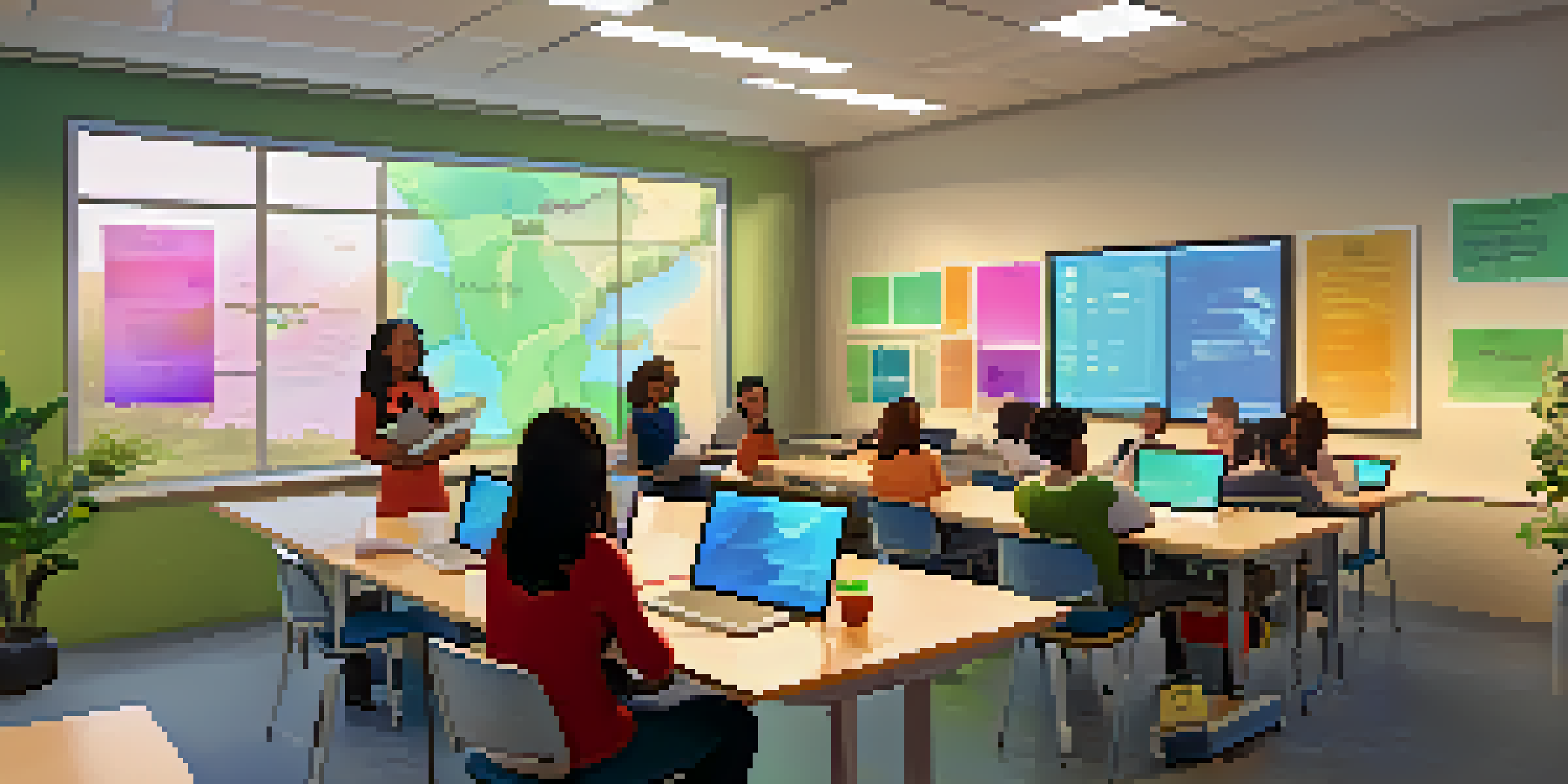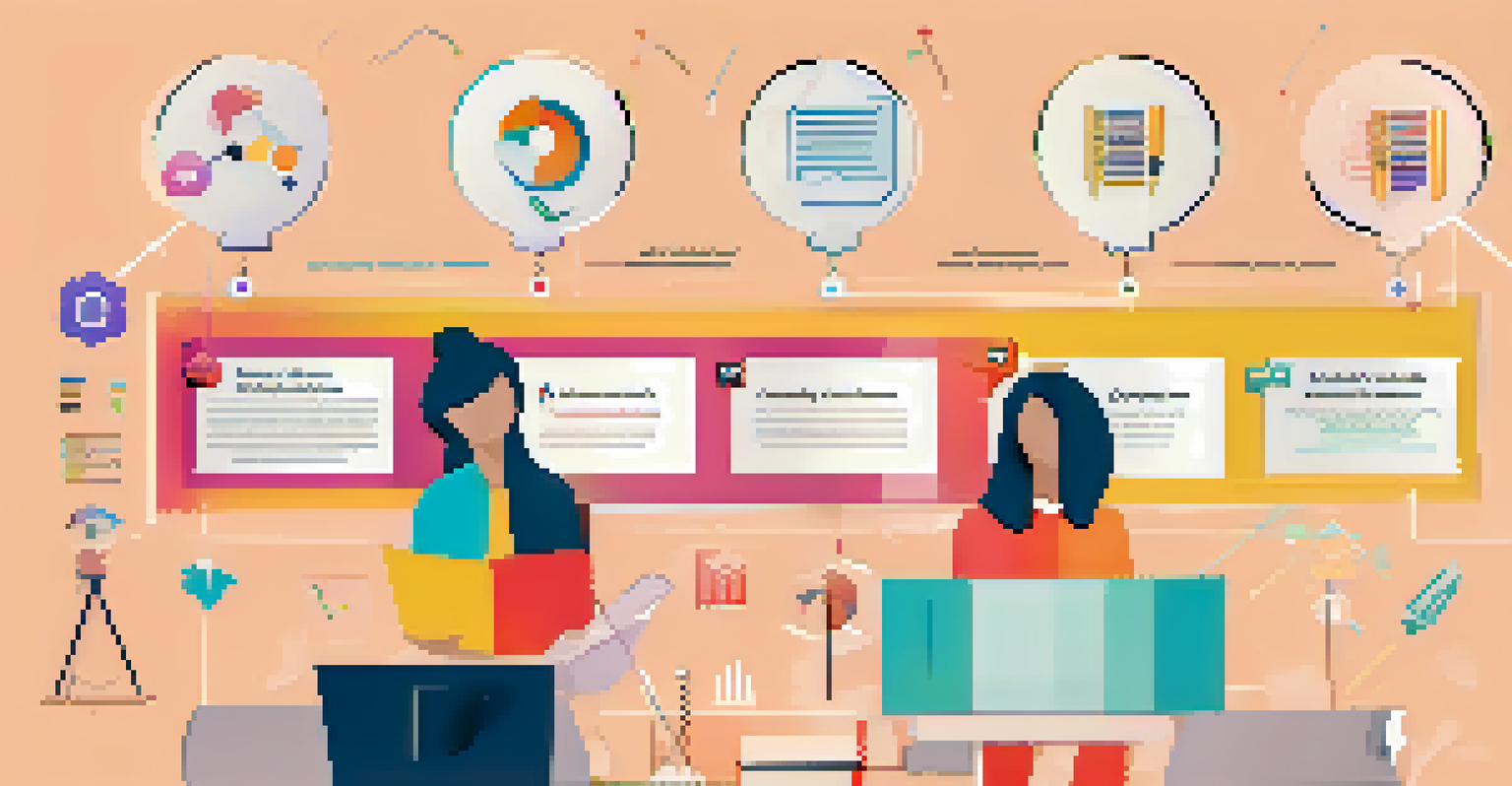Designing Cohesive Curriculums for Remote Learning Programs

Understanding the Importance of Cohesion in Remote Learning
Cohesion in remote learning is essential for student engagement and success. When learners can see how different parts of their curriculum connect, they are more likely to stay motivated and retain information. Think of it like a puzzle; each piece needs to fit together for the complete picture to make sense.
Education is not the filling of a pail, but the lighting of a fire.
Without a cohesive design, students might feel lost or overwhelmed, which can lead to frustration. This is especially true in remote environments where face-to-face interactions are limited. By establishing clear connections between topics and skills, educators can guide students through their learning journey more effectively.
Moreover, cohesive curriculums help teachers, too. They can streamline lesson planning and assessments, making it easier to track student progress. In essence, a well-structured curriculum creates a supportive framework for both learners and educators.
Identifying Learning Objectives for Remote Programs
The first step in designing a cohesive curriculum is identifying clear learning objectives. These objectives serve as a roadmap, guiding both instructors and students on what is expected throughout the course. For instance, if a course objective is to develop critical thinking skills, all activities should align with that goal.

When objectives are specific and measurable, they help in assessing student progress and understanding. This clarity allows educators to create targeted assignments and assessments that reinforce those objectives. Imagine trying to navigate without a map—without clear goals, it can be easy to stray off course.
Cohesion Drives Student Success
A cohesive curriculum enhances student engagement by connecting different parts of the learning experience.
Moreover, involving students in setting some of these objectives can increase their buy-in and motivation. When learners have a say in their educational journey, they are more likely to engage deeply with the material, which is vital for remote learning success.
Creating Engaging and Interactive Content
Engaging content is the heart of any effective remote learning program. Utilizing a mix of multimedia resources—like videos, podcasts, and interactive quizzes—can cater to different learning styles. For example, a visually-rich video might capture the attention of visual learners, while an interactive quiz can motivate kinesthetic learners.
The beautiful thing about learning is that no one can take it away from you.
Additionally, incorporating real-world scenarios into learning materials can make the content more relatable. When students can see the relevance of what they’re learning, their interest often spikes. Think of it as seasoning a dish; the right ingredients can elevate the entire experience.
Moreover, fostering a community through discussion forums or group projects can enhance engagement. Students are more likely to participate when they feel connected to their peers, even in a remote setting. This sense of belonging can significantly improve their learning outcomes.
Utilizing Technology to Enhance Learning Experiences
Technology plays a pivotal role in remote learning, offering tools that can enhance the educational experience. From Learning Management Systems (LMS) that organize course materials to video conferencing tools that facilitate live discussions, the right technology can make a significant difference. For instance, an LMS can help keep track of student assignments and submissions in one place.
In addition, leveraging interactive tools like polls or breakout rooms during live sessions can increase student participation. Imagine a classroom where students can collaborate in smaller groups, even from different locations—technology makes that possible. This approach not only diversifies the learning experience but also caters to varied learning preferences.
Clear Objectives Guide Learning
Identifying specific learning objectives serves as a roadmap for both educators and students, ensuring focused progress.
However, it’s essential to provide training for both educators and students on how to use these technologies effectively. When everyone is comfortable with the tools at their disposal, it leads to a smoother learning process and enhances the overall experience.
Incorporating Assessment and Feedback Mechanisms
Assessment and feedback are critical components of a cohesive curriculum. Regular assessments help gauge student understanding and inform instructional decisions. For example, formative assessments, like quizzes or reflective journals, can provide insights into how well students are grasping the material.
Feedback, on the other hand, is vital for student growth. Constructive feedback helps learners identify their strengths and areas for improvement. Think of it as a compass—guiding them back on track when they veer off course.
Moreover, incorporating peer assessments can foster a collaborative learning environment. Students can learn from each other’s perspectives, which can deepen their understanding of the subject matter. This mutual engagement not only reinforces learning but also builds a sense of community.
Building a Supportive Learning Environment Online
Creating a supportive online learning environment is essential for student success. This involves not only providing academic resources but also emotional support. Regular check-ins and open communication channels can help students feel valued and understood, even from a distance.
Encouraging a growth mindset is another way to foster a positive atmosphere. When students are reminded that challenges are part of the learning process, they’re more likely to tackle difficulties with resilience. It’s like teaching them to embrace the bumps in the road instead of fearing them.
Technology Enhances Remote Learning
Utilizing various technologies can significantly improve the educational experience by fostering interaction and collaboration.
Additionally, promoting a culture of inclusivity ensures that all students feel welcome and engaged. By considering diverse backgrounds and learning needs, educators can create an environment that celebrates individuality. This sense of belonging can significantly enhance the remote learning experience.
Evaluating and Iterating the Curriculum Over Time
The final step in designing a cohesive curriculum is ongoing evaluation and iteration. Education is not static; what works today may not be effective tomorrow. Regularly reviewing the curriculum based on student feedback and performance data can help identify areas for improvement.
For instance, if many students struggle with a particular module, it may indicate that adjustments are needed. This could involve refining the content or modifying the instructional approach. Think of it as tuning a musical instrument—regular adjustments ensure it plays beautifully.

Moreover, staying current with educational trends and technologies can inform curriculum updates. By continually adapting to the changing landscape, educators can ensure that their remote learning programs remain effective and relevant. In the end, a dynamic curriculum fosters lifelong learning, both for students and educators alike.